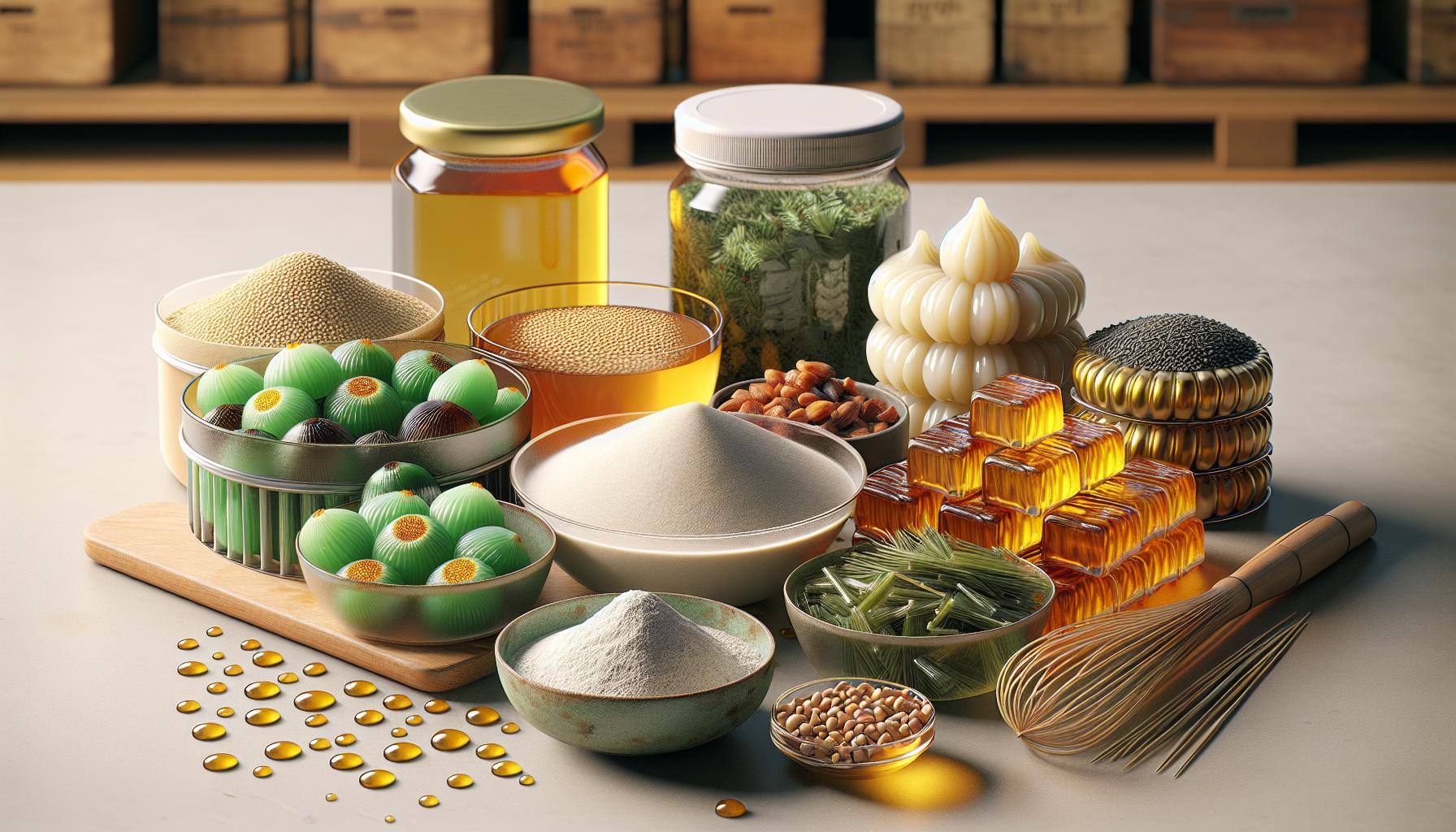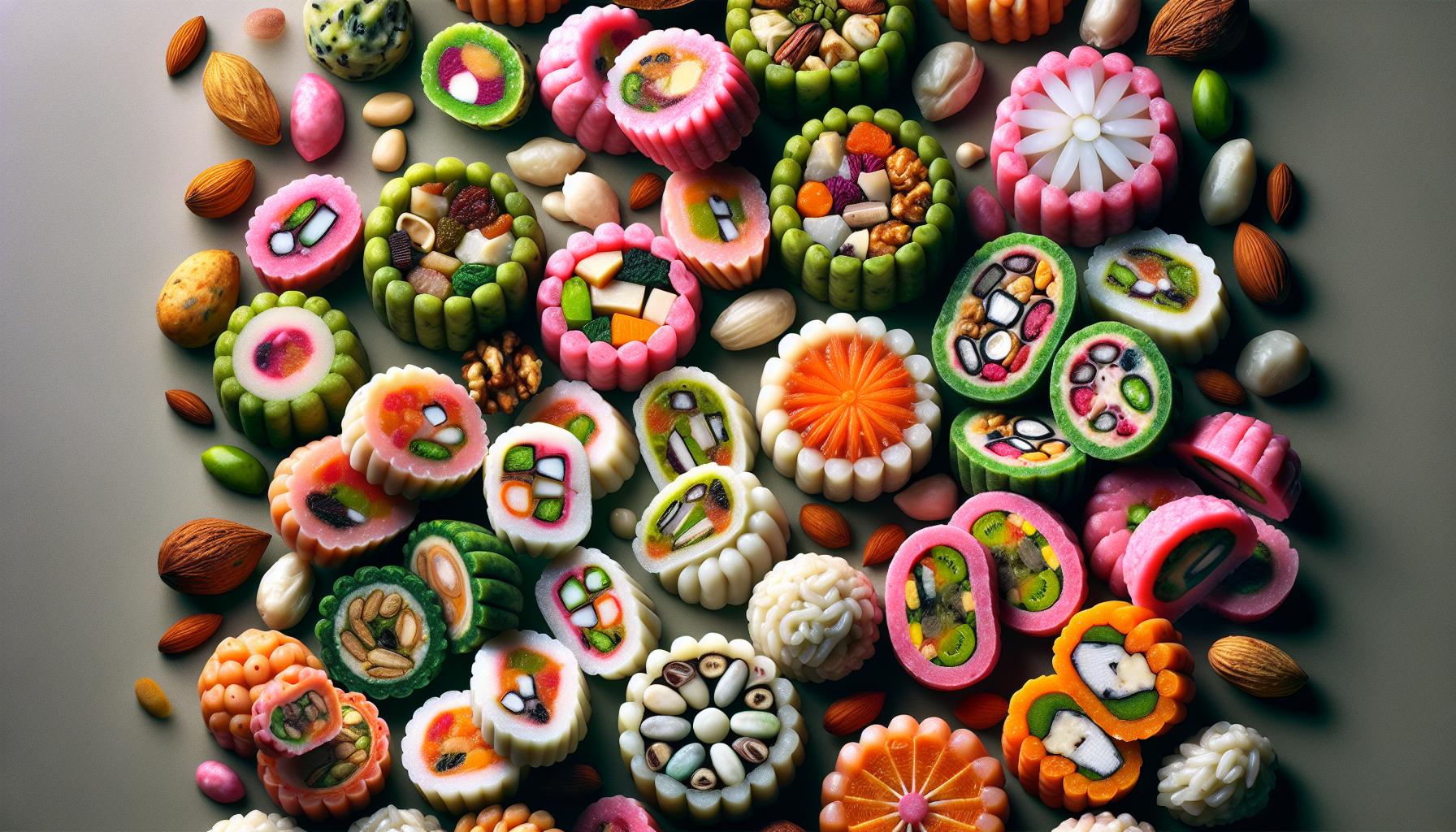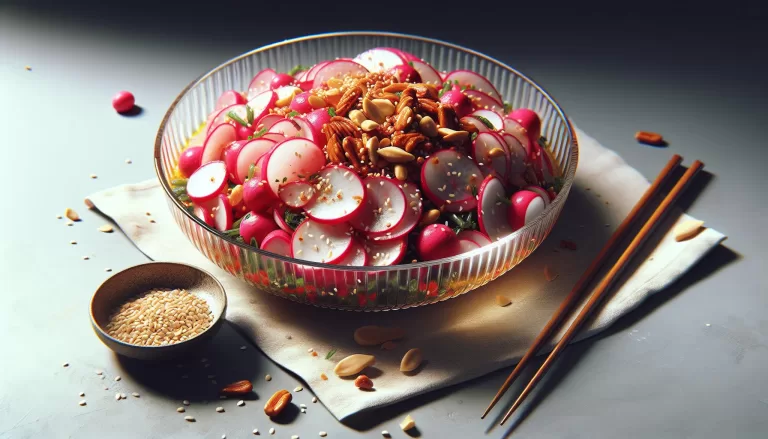Creative Homemade Songpyeon Recipe – Traditional Korean Rice Cake with a Twist

History of Songpyeon
Songpyeon holds a unique spot in the rich tapestry of Korean history. Your journey into the art of Songpyeon-making doesn’t just create a treat for the taste buds but also graces the path to cultural understanding. Experience Korea’s rich traditions as we delve deeper into the story behind these delightful half-moon-shaped rice cakes. Let your kitchen become your time machine!
It all started centuries ago under the Goryeo Kingdom (10-11th centuries AD). Songpyeon became a symbol of celebration, primarily for Chuseok—the Korean harvest festival. Folklore claims that Songpyeon baking competitions were held. The family member who crafted the most beautiful Songpyeon had the blessing of a great upcoming year. Isn’t that a fun tidbit?
Move forward to the Joseon Dynasty (1392-1910) and the love for Songpyeon persisted. It’s documented that even King Sejong, known for creating Hangul, relished this delightful treat. Songpyeon continued to evolve with Korea’s dynamic history. Time passing only increased its prominence in Korean traditions.
The name Songpyeon shares a distinctive etymology. ‘Song’ stands for pine – indicative of the way it’s steamed over pine needles that lend it a distinctive aroma. ‘Pyeon’, loosely translated refers to ‘a carefully made, precious thing.’ Imagine that! The etymology itself hints at the respect and care the cooking process demands.
During Chuseok, families come together to make Songpyeon. It’s not just a recipe but a tradition, a bonding activity that fosters unity and love. Can’t you just picture the steam rising from the Songpyeon, the laughter around the kitchen table, the stories being passed from one generation to the next?
In crafting your Songpyeon, you’re not merely cooking. You’re participating in a tradition steeped in history. Each knead, each fold, each steam – it symbolizes a rich tale that spans generations. As the sweet filling graces your tongue and you savour the chewy texture, remember, you’re not just making food. You’re experiencing a part of Korean culture that’s as rich and complex as the Songpyeon itself.
Ingredients Needed

Navigating the realm of traditional cuisine, your next step is gathering all the necessary ingredients to craft your homemade Songpyeon. The list is straightforward, with key ingredients a breeze to source.
- Glutinous Rice Flour – 500 grams: The basis of your Songpyeon, creating that unique chewy texture.
- Honey or Corn Syrup – 60 grams: Gives the right touch of sweetness.
- Sesame Seeds – 80 grams: Toasted for flavor and mixed with honey or corn syrup.
- Mugwort Powder or Natural Food Coloring – 2 tablespoons (optional): Used to add a pop of color to a few of your Songpyeon!
You’ll also need Water – 275 ml: Essential to get the right consistency for your dough, and Pine Needles – a handful (if possible): For that authentic aroma during steaming.
Ingredient Alternatives
Consider options that fit your dietary needs or flavor preferences. For example, swap honey with Agave Syrup if you’re vegan. Although not traditional, you can use Almond Extract for a different twist of taste.
Songpyeon Nutritional Data
Many of you are mindful of your diet and want to know what’s in what you eat. Below is the nutritional breakdown per 100 grams of Songpyeon made using these ingredients:
| Nutritional Component | Amount |
|---|---|
| Calories | 298 |
| Carbs | 68 g |
| Protein | 5.6 g |
| Fat | 0.9 g |
| Vitamin B | 0.2 mg |
| Iron | 1.9 mg |
Step-by-Step Instructions

Before you dive into making Songpyeon, ensure you have all your ingredients ready. To ease the process, we recommend you separate the items into three groups: the dough, the filling, and the steam.
Preparing the Dough
Start with the dough, the base of your Songpyeon. Pour 200 grams of glutinous rice flour into a bowl. Slowly add water and mix until you have a firm but pliable dough. Adjust the water quantity to your texture preference. Give your dough a unique flavor by adding mugwort powder or use natural food coloring for a vibrant touch.
Creating the Filling
Now it’s time for the sweet filling. Heat a pan, add 100 grams of sesame seeds and toast them until you hear a popping sound. Once cooled, grind the seeds and mix in 85 grams of honey or corn syrup. Remember, you can switch to agave syrup – a great alternative for vegans.
Shaping and Cooking
Roll your dough into small balls, flatten them, and add your filling. Fold the dough over and pinch the edges to form that iconic half-moon shape. Make sure the filling is adequately sealed to prevent leaks.
Now place your pine needles at the bottom of your steamer – they’ll infuse a unique aroma to the Songpyeon. Place your formed Songpyeon on top, then steam for about 20 to 30 minutes.
And there you have it! You’d have created your homemade Songpyeon. The whole process may seem lengthy, but the satisfaction of eating your own handmade traditional Korean rice cake is hard to match.
This recipe makes around 20 Songpyeon, each packed with a punch of flavor, and it’s relatively healthy too! It boasts an impressive nutritional lineup – 100 grams of Songpyeon provides about 267 calories, 59 grams of carbs, 5 grams of protein, 2 grams of fat, a touch of vitamin B, and a chunk of iron.
Remember, cooking is a form of art, and your artistry should reflect in your Songpyeon. Don’t shy away from experimenting with different variations and making the recipe truly yours.
Tips for Perfect Songpyeon

Songpyeon can be a bit tricky to perfect, but don’t fret! The following tips and tricks promise to help you create flawless Songpyeon.
The first thing to remember: It’s all about the dough. Rice flour dough tends to crack easily. If it does, don’t hesitate to add a bit more water. Continually knead it until you achieve a soft, pliable texture. Remember, the smoother the dough, the better your Songpyeon will look.
Now on to the filling. Sesame seeds and honey are the traditional stuffing but get creative. You could use sweet red bean paste, chestnut filling, or even try a salty variant with minced meat. Make the Songpyeon your own!
When shaping them, be sure to seal the edges properly. If they aren’t sealed right, the filling leaks out while steaming, resulting in a less-than-ideal outcome. Not to worry, though: some practice and patience go a long way.
The unique aroma of Songpyeon mainly comes from the pine needles used during steaming. If you don’t have access to pine needles, substitute them with a clean cloth. It doesn’t quite match the scent of pine needles, but it does the job.
Steam your Songpyeon on high heat for the first 15 minutes, then lower the heat and let them cook slowly for another 20 minutes. This helps keep the integrity of the dough and ensures the filling is thoroughly cooked.
A great option to keep in mind: Songpyeon freezes superbly. Don’t hesitate to save some for later. Just pop the frozen Songpyeon into boiling water when you’re ready to enjoy them again.
Variations to Try

Let’s spice up your Songpyeon adventures! There are countless variations you can experiment with till you find your perfect Songpyeon.
Herbal Influence
Some experts add a touch of herbal flavor to their Songpyeon. Whether it’s a sprinkle of ground cinnamon or a few leaves of fresh mint depends on your preference. Imagine biting into a sweet rice cake with a subtle mint or cinnamon hint. Doesn’t that sound enticing?
Dough Variations
Ever thought of coloring your Songpyeon dough? Create a feast for the eyes and palate by adding natural colorants to your dough. Squeeze some beet juice for vivid pink, spinach juice for bold green, or carrot juice for an exciting orange hue.
Exotic Filling Combinations
The realm of Songpyeon fillings is where your culinary creativity can truly shine. If you’re a fan of exotic flavors, why not incorporate some grated coconut mixed with brown sugar? For those who lean towards savory tastes, a stuffing of cheese blended with finely chopped jalapeno peppers could be exciting!
Nutrient-Packed Songpyeon
Curious about the nutritional value of your Songpyeon? With a few tweaks, you can increase its nutritional profile. Consider adding toasted black sesame seeds or chopped nuts to your filling. Not only do these add a delightful crunch, they’re also rich in proteins and good fats.
Conclusion
So, you’ve got the knowledge and the inspiration to take your homemade Songpyeon to the next level. Whether you’re adding a twist of mint or cinnamon, playing with colorful dough, or stuffing it with unique fillings, the possibilities are truly endless. Don’t forget, you can also make your Songpyeon healthier with the addition of black sesame seeds or chopped nuts. It’s time to roll up your sleeves, get creative, and start experimenting with your own Songpyeon variations. Who knows? You might just create the next big thing in traditional Korean cuisine. Remember, the key to a successful Songpyeon is not just in the taste, but also in the love and joy you pour into making it. Happy cooking!





